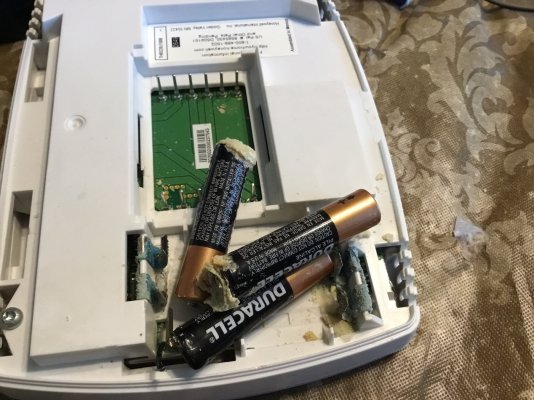Thirty years ago your average gas fired hot air furnace was a relatively simple affair. When the thermostat called for heat it ignited and the fire heated the heat exchanger and the blower came on a sending hot air through your ductwork and bam your house gets warm. But they weren’t particularly efficient in pulling every BTU for every bit of gas burnt.
12 years ago along comes Ray with an inefficient undersized A/C and boiler units. In the summer the upstairs, where the bedrooms are, would always be warmer. My A/C and boiler unit were about 20 years old at the time. I pulled the trigger on a $12k and change for new highly efficient boiler and bigger A/C unit.
The new unit was a direct vent model which meant in addition to a multi speed blower fan it had a smaller exhaust fan that blew all that nasty CO2 out a vent that the installers cut into the side of my house. Did you know the one byproducts of burning gas was H2O - yes water. So my furnace also has a little reservoir with a pump to evacuate the water. Compared to the original furnace this thing is a nuclear reactor. Oh and one other thing since the nuclear reactor will no longer be using the chimney and the hot water heater will not supply sufficient heat to dry out the chimney we need to replace the brand new water heater for a power vent model that also vents out the side of the house $1,200. Yep quicksand.
12 years later I discover, after the much touted polar vortex, the multi speed 10 year warranty fan in the furnace has died. In addition to some electronics Bam. $2,000 plus the exhaust fan is 12 years old and doesn’t sound good. Keep in mind my Yotul gas stoves are heating the house. I had the furnace only come on to heat up the house in the mornings. No one likes to shower in a 58 degree bathroom- at least no one I know. So tomorrow, at great expense, the old 2nd furnace in this house will be replaced with the latest generation of Nuclear Reactors. Being positive person I’ll call the new unit 3 Mile Island.
There are times when complexity and efficiency come at a cost of durability. It is a painful lesson but I cant help but wonder what could I have done differently? As I sit here boilerless and look at the fire in the Yotul, that had its moment in the sun too, I thank God at least we have heat. At least for today.
12 years ago along comes Ray with an inefficient undersized A/C and boiler units. In the summer the upstairs, where the bedrooms are, would always be warmer. My A/C and boiler unit were about 20 years old at the time. I pulled the trigger on a $12k and change for new highly efficient boiler and bigger A/C unit.
The new unit was a direct vent model which meant in addition to a multi speed blower fan it had a smaller exhaust fan that blew all that nasty CO2 out a vent that the installers cut into the side of my house. Did you know the one byproducts of burning gas was H2O - yes water. So my furnace also has a little reservoir with a pump to evacuate the water. Compared to the original furnace this thing is a nuclear reactor. Oh and one other thing since the nuclear reactor will no longer be using the chimney and the hot water heater will not supply sufficient heat to dry out the chimney we need to replace the brand new water heater for a power vent model that also vents out the side of the house $1,200. Yep quicksand.
12 years later I discover, after the much touted polar vortex, the multi speed 10 year warranty fan in the furnace has died. In addition to some electronics Bam. $2,000 plus the exhaust fan is 12 years old and doesn’t sound good. Keep in mind my Yotul gas stoves are heating the house. I had the furnace only come on to heat up the house in the mornings. No one likes to shower in a 58 degree bathroom- at least no one I know. So tomorrow, at great expense, the old 2nd furnace in this house will be replaced with the latest generation of Nuclear Reactors. Being positive person I’ll call the new unit 3 Mile Island.
There are times when complexity and efficiency come at a cost of durability. It is a painful lesson but I cant help but wonder what could I have done differently? As I sit here boilerless and look at the fire in the Yotul, that had its moment in the sun too, I thank God at least we have heat. At least for today.
Last edited:

